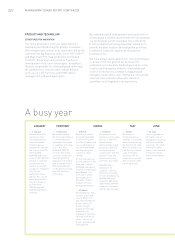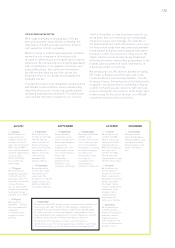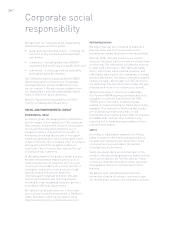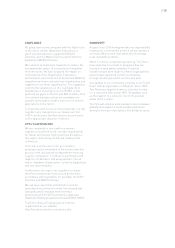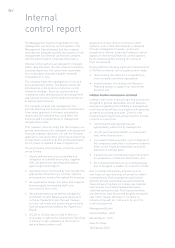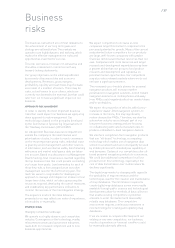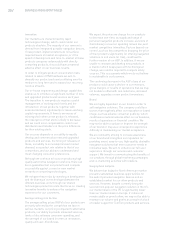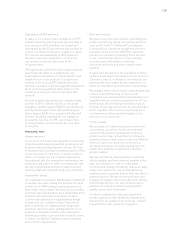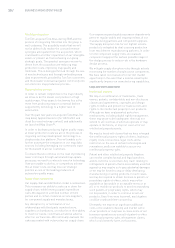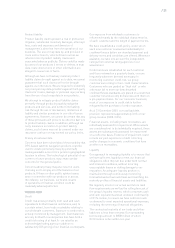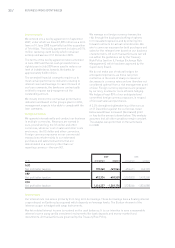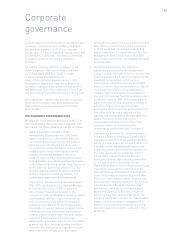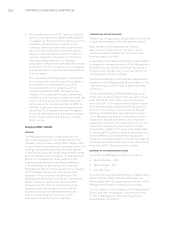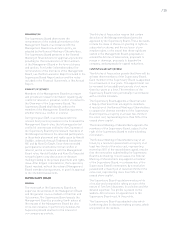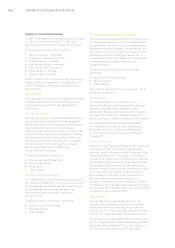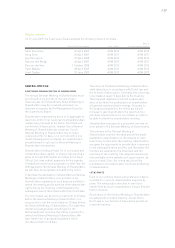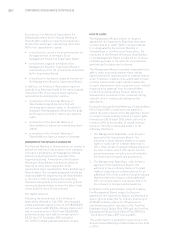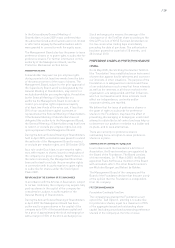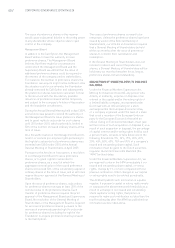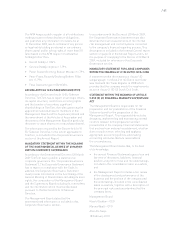TomTom 2009 Annual Report Download - page 34
Download and view the complete annual report
Please find page 34 of the 2009 TomTom annual report below. You can navigate through the pages in the report by either clicking on the pages listed below, or by using the keyword search tool below to find specific information within the annual report.
32 / BUSINESS RISKS (CONTINUED)
Loan covenants
We entered into a facility agreement in September
2007, under which we drew €1,585 million as a term
loan on 10 June 2008 to partially fund the acquisition
of Tele Atlas. The facility agreement includes a €174
million revolving credit facility which remained
entirely undrawn as of 31 December 2009.
The terms of the facility agreement were amended
in June 2009 and the net cash proceeds from a
rights issue in July 2009 were used to reduce our
level of indebtedness towards the banks by
approximately €400 million.
The amended financial covenants require us to
meet certain performance indicators relating to
interest cover and leverage. In case of breach of
our loan covenants, the banks are contractually
entitled to request early repayment of the
outstanding amount.
We closely monitor the contractual performance
indicators and based on the group’s plan for 2010,
management expects to be able to comply with the
loan covenants.
Foreign currencies
We operate internationally and conduct our business
in multiple currencies. Revenues are earned in
euro, pound sterling, the US dollar and other
currencies, while our cost of sales and other costs
are in euro, the US dollar and other currencies.
Foreign currency exposures on our commercial
transactions relate mainly to our estimated
purchases and sales transactions that are
denominated in a currency other than our
reporting currency – the euro (€).
We manage our foreign currency transaction
risk through the buying and selling of options
for forecasted exposures and by entering into
forward contracts for actual commitments. We
aim to cover our exposure for both purchases and
sales for the relevant term based on our business
characteristics. All such transactions are carried
out within the guidelines set by the Treasury
Risk Policy (section 5, Foreign Exchange Risk
Management), which has been approved by the
Supervisory Board.
We do not make use of natural hedges for
anticipated exposures, as these can prove
ineffective in the event of sharp increases or
decreases in currency rates and are therefore not
considered optimal from a risk management point
of view. Foreign currency exposures are grouped
by currency to allow for more efficient hedging.
We hedge at least 80% of our anticipated and
committed foreign currency exposure, in respect
of forecast sales and purchases.
A 2.5% strengthening/weakening of the euro as
of 31 December against the currencies listed
below would have increased (decreased) profit
or loss by the amount shown below. This analysis
assumes that all other variables remain constant.
The analysis was performed on the same basis
for 2008.
2009 2008
(in €) strengthen weaken strengthen weaken
AUD
Net profit after taxation 178,260 -169,564 -254,611 242,190
GBP
Net profit after taxation 692,324 -658,559 -1,153,832 1,430,268
USD
Net profit after taxation 1,416,227 -1,349,176 1,728,546 -1,834,088
Interest rates
Our interest rate risk arises primarily from long term borrowings. These borrowings have a floating interest
coupon based on Euribor plus a spread which depends on leverage levels. The Euribor element of the
interest coupon is hedged with swap instruments.
Market-related interest income is received on the cash balances. It is our intention to earn a reasonable
interest income using vanilla investment instruments like bank deposits and money market fund
investments. All transactions are governed by the Treasury Risk Policy.


